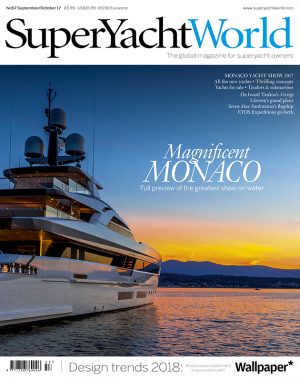Richard Coles is a superyacht lawyer, a partner at London firm Gateley. He is also the co-author of the new book The Law of Yachts and Yachting, out now.

What was happening in the world of superyacht law when you began your career?
In the mid-seventies, yacht work was rare and very small beer compared to the financing of bulk carriers and other vessels built by European yards. I handled ship finance transactions on behalf of the Danish Ship Credit Fund which comprised the majority of my work. In addition, I dealt with ship mortgage and sale and purchase work for several UK ship owners.
At that time, the term ‘yacht lawyer’ was unknown. The only London law firm at that time that handled a significant amount of yacht work was Ingledew Brown Bennison and Garrett, who handled claims work for insurers and yacht-owners. In later years, a group of younger lawyers broke away from Ingledews to set up on their own to form Holmes Hardingham Johnston and Walser which merged with my present firm, Gateley LLP, in 2008.
I was fortunate that a couple of smaller clients of Holmans decided to follow me to a new firm Carter and Co and within months I found myself very busy with transactional shipping work for a number of clients in the UK, South Africa, Saudi Arabia and Japan. Although the bulk of my work during the early 1980’s related to commercial shipping, one of my early contacts was a wealthy South African yachtsman who instructed me on a number of transactions and recommended me to others over more than 25 years.
What were some of the memorable and challenging events in your career as a yacht lawyer?
During the 1980s I was involved in a number of memorable yacht matters, including the investment by a foreign client in one of the leading Dutch yards; the contract for the construction of a large motor yacht by a now defunct English boat-builder for a well known British property developer and the cancellation of a major yacht building contact at a Dutch yard by a high profile multi- millionaire US customer.
I enjoyed researching the ownership of a derelict 60-year-old pleasure yacht and successfully obtaining a declaration from an Admiralty Court judge as to the legal ownership, and purchasing the classic sailing yacht Blue Leopard for a British client.

When did you begin to see the emergence of superyachting as we know it today?
In the mid 1990s the superyacht industry was starting to take off. The Mediterranean Yachtbrokers Association was a relatively young organization whose membership was dominated by a handful of mainly British-based brokers, and a large number of smaller, Mediterranean-based brokers with a strong French contingent. I was fortunate enough to be invited to the early MYBA Charter Shows at San Remo, where broking houses competed with each other to provide the most extravagant evening receptions. I will always remember the occasion when Alex Braden and Mike Everton-Jones of Yachting Partners International rode into the marquee on horseback with all of their team dressed as cowboys, Indians or US cavalry.
What changes have you seen in the industry in the past 35 years?
Prior to the mid-nineties, the operation of pleasure yachts and charter vessels was relatively unregulated. However, with the introduction of the Large Yacht Code for commercial charter vessels in 1997, the ISM Code affecting yachts of over 500 GT from 2002 onwards and two years later the ISPS Code, far greater demands are required of yacht owners and their managers. Their lawyers need to be fully conversant with the law and the relevant regulations applicable to the yachting industry. I am increasingly of the opinion that an effective yacht lawyer is someone who specializes in the field, rather than a generalist shipping lawyer.
What are your recent highlights in yachting law?
The most iconic sailing yacht in the world is probably Maltese Falcon and it was a privilege to be involved in the construction of that vessel which was delivered to her original owner in 2007.
I am currently involved in the construction of a motor yacht which is even larger. The owners of such vessels and their designers are extraordinary people and to provide legal assistance to them on such a project is a huge responsibility, but one that gives great satisfaction.
On the professional side, I have taken part in the annual MYBA Yacht Brokers Seminar on a pro bono basis and I am proud to have this year completed with Filippo Lorenzon The Law of Yachts and Yachting, the first ever English legal textbook devoted to the subject.





